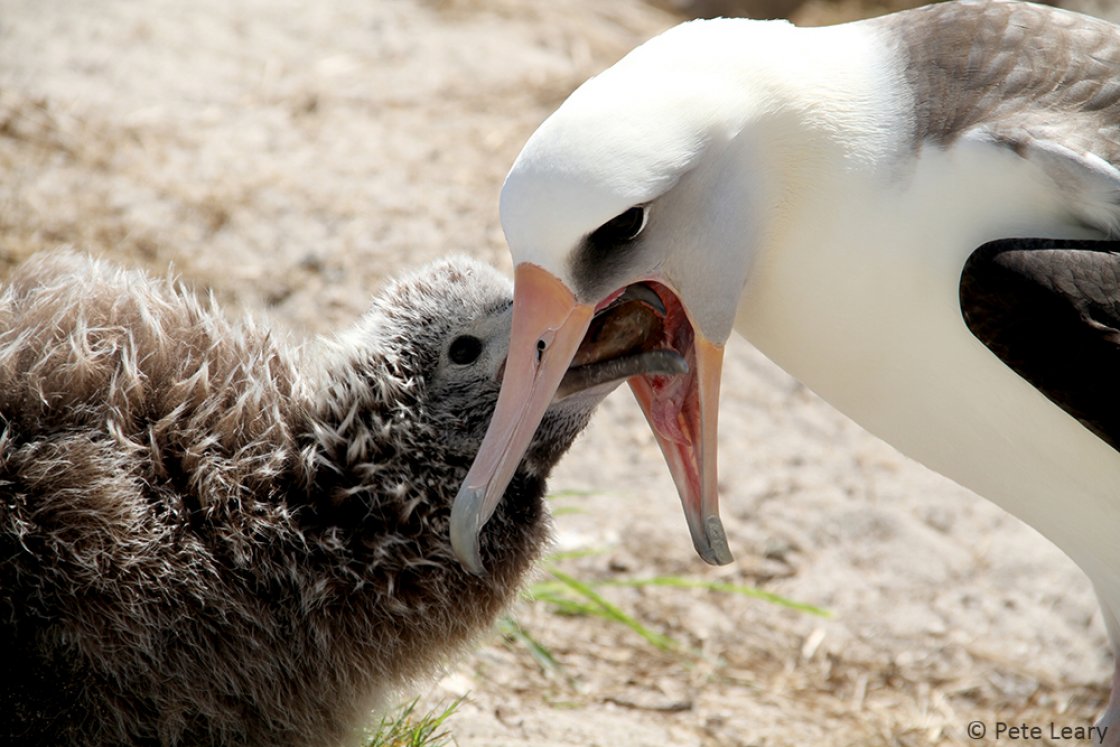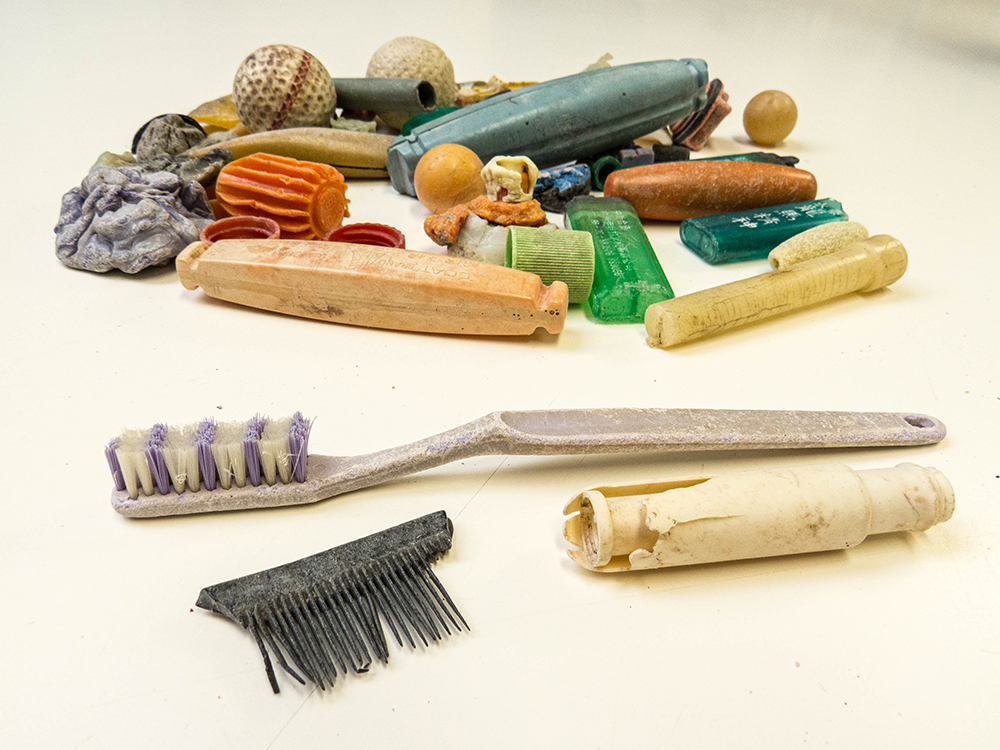You are here
The Albatross and the Cigarette Lighter

Hobart, Australia, 8 October 2019 - You are going on a bird-watching holiday. You travel to a seabird island, say in the North Pacific. On arrival you are delighted to see thousands of albatrosses spread right across the island. Your guide tells you the albatrosses are nearly at the end of their breeding season and that nearly all the birds before your admiring gaze are chicks that have lost their downy feathers and will soon fly away to sea, not to return for four years or more. There are very few adults present but you do see one a little way away feeding its chick, regurgitating its stomach contents of warm and oily squid directly into the chick’s open bill.
Then just in front of where you are standing on the colony edge a chick starts to act oddly. It seems to be in severe distress. Its body is heaving and it is making retching sounds. You say it looks like it’s been poisoned. Your guide reassures you: “No, do not worry, this is completely natural - watch”. You do watch as the bird, “poor bird” you think, continues retching. One more convulsive heave and it regurgitates an indistinguishable mass at its feet. You ask can we get a closer look. The guide allows this as she explains to you that the growing chicks get fed mainly squid by their parents and the hard, undigested squid beaks accumulate in the stomach over the weeks and months of growth until the chick regurgitates them before it takes its first flight, lightened by its discarded load.
You take the allowed closer look and say “But what is that the bright red thing among the smaller, dark-brown beaks?” Your guide also looks and says “Oh that, that is a bottle top fed to the chick by one of its parents”.
“Bottle top! You mean it’s a plastic bottle top from a cool drink bottle?” you exclaim. You look around, some nests do not have chicks on them, just low mounds of feathers and bones: all that is left of chicks that have not survived to fledge. Perhaps, you think, a parent has died at sea, probably caught on a fishing hook, and single-parent meals have not been enough. But you look closer and see among the bones, feathers and squid beaks, plastic items of all colours; red, yellow, green and more; more bottle tops, spoons, toothbrushes, even little toy figurines and cigarette lighters. Lots of cigarette lighters, at least one or two in every corpse you inspect.

Walking back to your island accommodation you talk more with your guide “Why do the parent albatrosses swallow all this plastic junk?” The guide says albatrosses are “surface seizers”, swallowing food items they find floating on the sea surface: dead and moribund squid, flying fish eggs and the like. She says it seems the floating plastic items are not distinguished from natural food. You say then “So the chicks die because of their plastic loads?” Your guide (she is patient with your questions) explains it is difficult to prove this, perhaps the ones that died just did not get fed enough. But she tells you that some research suggests a stomach full of plastic can give a false feeling of satiation, and so chicks may beg for food less often or vigorously, and so get fed less. Also, digestion could leach out toxic chemicals from ingested plastic and the chicks might then get poisoned. She frankly admits more research is required to tease out what is really happening.
The guide leads you behind a building. You see six plastic crates (all washed up on the island’s shore she says). Every box is brimming with cigarette lighters, there must be some thousands of them. The guide says volunteers, who visit the island to help with the annual breeding count (it takes days to complete, she informs), have collected them from the corpses of chicks like the ones you saw. “We plan to make a giant model albatross out of them” she tells you.
You look at the crates; contents and say “There seems to be more red and pink lighters than other colours”. The guide says it seems the albatross mistake especially red and pink plastic objects for food, and that perhaps blue and green lighters are harder to spot floating on the sea surface. You have a thought: “So if we could get the manufacturers to make only blue and green cigarette lighters then perhaps fewer chicks would die? The guide is uncertain about this but she does say that a visiting ornithologist more than a decade ago had a similar idea and even wrote a short scientific paper with the suggestion. You then say “But did anything come of his suggestion?” The guide thinks not as there are still lots of red and pink lighters to be found among the albatross bones and feathers on her island.

That evening you think more of what you have seen and been told. You think that even if the swallowed plastic is not the main or primary cause of death it surely cannot help the chicks to have their stomachs loaded with such floating trash. You resolve that from when you get home you will be more careful discarding plastic, especially the sorts of items you’ve seen. You also plan to try to avoid buying and using single-use plastic bags and bottles and that you will join the regular neighbourhood clean ups that pick up plastic on beaches, along river banks and in parks in your neighbourhood. Perhaps you even will be able to contribute something to the inauguration of the first World Albatross Day by the Albatross and Petrel Agreement on 19 June in 2020. And the little plastic toy soldier and the red cigarette lighter that you picked up from an empty nest and pocketed you will take home and show to your family and friends and explain to them that albatrosses are beautiful animals and that we should all treat them better than we do.

Read more about the first World Albatross Day to take place on 19 June 2020 here.
Reference:
Cooper, J. Auman, H.J. & Klavitter, J. 2004. Do the albatrosses of Midway Atoll select cigarette lighters by color? Pacific Seabirds 31: 2-4.
www.pacificseabirdgroup.org/publications/PacificSeabirds/VOL_31_1.pdf
John Cooper, Information Officer, Agreement on the Conservation of Albatrosses and Petrels; www.acap.aq
